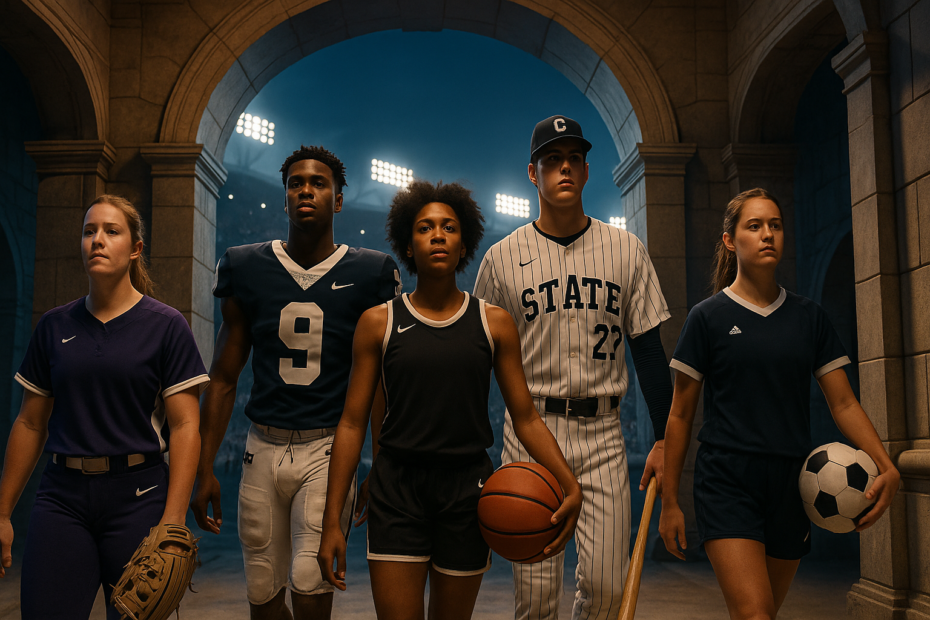Historic $2.8 Billion NCAA Settlement Approved — Here’s What It Means for College Athletes
In a landmark decision that could redefine the future of college sports, a federal judge has granted final approval to the $2.8 billion settlement in the House v. NCAA antitrust lawsuit.
The settlement, which has been years in the making, marks a massive shift in how college athletes are compensated—and officially acknowledges the NCAA’s liability for restricting athlete earnings related to their name, image, and likeness (NIL).
This ruling doesn’t just close one of the most consequential cases in college sports history. It opens a new chapter that will directly impact over 14,000 former and current athletes, and potentially change the economic model of college athletics forever.
🧾 What Is House v. NCAA?
The House v. NCAA case challenged the organization’s long-standing restrictions on athlete compensation related to NIL. Plaintiffs argued that NCAA rules unlawfully limited their ability to profit from their personal brand, even as universities and networks generated billions from their performances.
The lawsuit gained momentum following the Supreme Court’s 2021 Alston decision, which already weakened the NCAA’s hold on amateurism. House v. NCAA took that one step further—seeking back pay for lost NIL opportunities between 2016 and 2021.
💰 What the Settlement Includes
The NCAA has agreed to pay $2.8 billion in damages to former Division I athletes. The money will be distributed based on playing time and eligibility windows, with some athletes potentially receiving tens of thousands of dollars in back pay.
But the financial payout is only part of the story.
The agreement also includes a framework for future revenue-sharing, allowing schools to directly pay athletes moving forward—a revolutionary concept that upends decades of amateurism policies.
🔁 What’s Changing Going Forward?
Beginning as early as the 2025–26 academic year, schools may begin directly sharing athletic department revenue with players. This could mean six-figure annual payments for athletes in major sports like football and basketball.
Here’s what’s expected to change:
- Schools can voluntarily opt in to revenue sharing.
- Athletes will retain NIL rights while also receiving direct compensation.
- The NCAA will likely create guardrails to prevent chaotic pay structures or unfair recruiting advantages.
The model still requires buy-in from conferences and schools, but it signals a profound change in how athletes are valued.
⚖️ Why This Matters
For decades, the NCAA maintained a strict line between amateurism and professionalism. Critics have long argued that college athletes—who risk injury, work rigorous schedules, and help generate millions in TV and merchandise deals—deserve more than a scholarship and stipend.
This settlement essentially confirms that position in legal and economic terms.
It also pressures universities and conferences to update their compliance systems, recruiting practices, and financial planning.
👥 Who Benefits?
Over 14,000 athletes who competed between 2016 and 2021 may be eligible for compensation, including stars who have since gone pro and lesser-known players whose opportunities were still limited by outdated policies.
Athletes in sports like football, basketball, volleyball, softball, and track and field stand to gain the most, especially those in high-profile Division I programs.
🧠 Expert Reactions
Legal analysts are calling this a “watershed moment” for college sports.
“This is the first time we’ve seen an official, court-approved acknowledgment that athletes were financially harmed under the NCAA’s prior NIL rules,” said Michael Caspino, a sports law expert.
Meanwhile, coaches and athletic directors are beginning to assess what this means for team budgets, recruiting fairness, and player retention.
🔚 Final Thoughts
The NCAA settlement in House v. NCAA isn’t just about back pay—it’s about a reckoning. It recognizes that for far too long, the system profited immensely off unpaid labor.
With this decision, the playing field begins to tilt back toward the athletes. Whether this leads to a more equitable system—or a new era of commercialized college sports—remains to be seen.
One thing is clear: college athletics will never be the same again.
